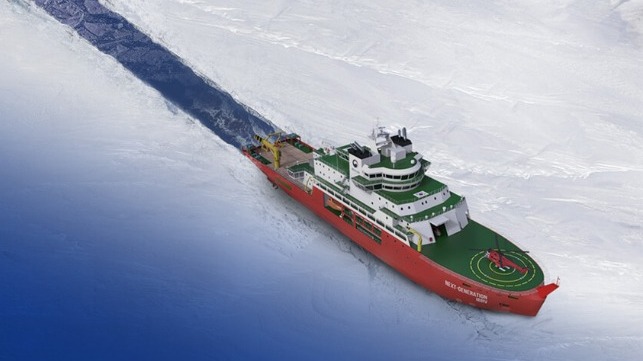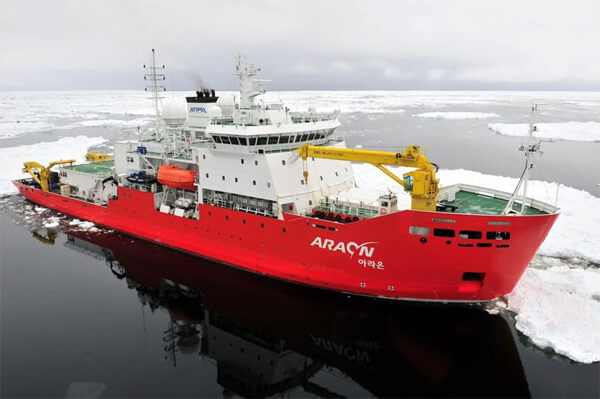Hanwha Ocean to Build New Polar Research Vessel for South Korea

Hanwha Ocean has been selected as the preferred bidder for the construction of a new government-owned polar research vessel. The contract comes as more nations race to expand their presence in the polar regions, which the shipyard notes is creating a new business opportunity.
Korea built its first polar research vessel, Araon (6,950 GT), starting in 2008 and at Hanjin Heavy Industries and commissioned the vessel in 2012 for year-round polar research between the Arctic and Antarctic. The vessel was built at a cost of over 100 billion won (US$74 million at current exchange rates). It can accommodate 85 people, including 25 crew and 60 researchers, and has 25 key pieces of research equipment.
The vessel has a range of 17,000 nautical miles and can break flat ice of 1 meter thickness at a speed of 3 knots. It carries 31 TEU for equipment and supplies. It is currently completing regular maintenance and will soon depart for the Arctic, where it will remain till September. After another quick overhaul, it will depart in October and remain till April 2026 in Antarctica.

Korea has operated Araon for more than a decade as its first polar research vessel (KOPRI)
The Ministry of Oceans and Fisheries led the search for a shipyard to undertake the project for the next-generation vessel, which will be operated by the Korea Polar Research Institute. Hanwha Ocean was selected and the government expects to complete a contract this month. Design work will begin for the new vessel, which will be completed by December 2029 to expand Korea’s polar research efforts.
Hanwha Ocean reports that the next-generation icebreaking research vessel will have a total tonnage of 16,560 tons, more than twice that of the Araon. It will be equipped with an LNG dual-fuel electric propulsion system, and will be a PC (Polar Class) 3 vessel with a bidirectional icebreaking capability that can break through 1.5 meter thick ice, and has a cold resistance of -45 degrees Celsius. For the comfort and productivity of the staff working on board, the project calls for the accommodations to be designed to the standards of a “top-class passenger ship.”
Korean officials stress the importance of adding the new vessel as the scope of research capacity expands, caused by changes in the polar environment. Hanwha Ocean notes the increasing interest in the polar regions for commercial operations. Japan recently launched its first dedicated ice-class Arctic research vessel while India announced an agreement with Norway and Japan for its first polar research vessel.
The shipbuilder, which was formerly Daewoo Shipbuilding and Marine Engineering, highlights that it began working on icebreaking designs in 2008 in anticipation of the possibility of the Arctic route. It became a leader in icebreaking LNG carriers, having built a total of 21 vessels, including 15 in 2014 and six in 2020.
Hanwha Ocean plans to devote more effort to the research and construction of icebreakers. It sees emerging opportunities in the capability as a possible future growth engine for the business.
Korea’s move in the sector comes as others, including Canada and Finland, look to leverage their capabilities in icebreaking ship construction. The Trump administration continues to highlight the U.S.’s desire for more icebreaking vessels, which is seen as a potential driver for the market.
